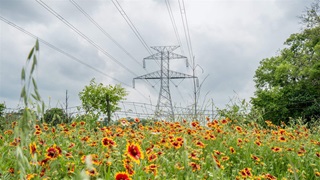After 1 Year, Opportunities and Challenges Remain for 988 Suicide and Crisis Lifeline
Stories and statistics point to mixed success since new 3-digit number launched last July

In July 2022, the National Suicide Prevention Lifeline changed its phone number from 10 digits to a three-digit code, and its name to the 988 Suicide and Crisis Lifeline. The goal was to be more inclusive of a range of mental health needs and make the Lifeline simpler to use. Since then, call centers fielded more than 4 million calls, chats, and texts—nearly doubling the annual average rate of calls received between 2017 and 2021. Additionally, average wait times dropped from almost three minutes to less than a minute nationally. The Lifeline also launched a pilot program to support LGBTQ youth, a population four times more likely to attempt suicide than their peers.
As the country continues to see increases in deaths by suicide and suicidal thoughts and behaviors, 988 serves as an important, easily accessible tool for people experiencing suicide risk. It enables them to speak to a trained counselor for immediate support and, if needed, to be connected to appropriate ongoing treatment and care services. The use of 988 suggests that more people are reaching out for help, and it appears to be working: 988 has reported that nearly 98% of people who reach out to the Lifeline get the crisis support they need without requiring additional emergency services in that moment.
Still, the rapid increase in calls has presented challenges that stakeholders can and should work to address. Although there are marked differences in states’ and territories’ call answer rates, demand has largely outpaced local call centers’ capacity to pick up the phone within a certain time frame to avoid callers being rerouted to a national network. When that happens, national operators may not be as well equipped as their local counterparts to provide information for crisis care services near the caller. And, counter to 988’s mission, callers may hang up during any delays in connecting with a counselor.
As states continue to implement and expand 988, policymakers and practitioners face three key challenges—and related opportunities—for improving this critical service.
Challenge One: Workforce shortages
Staff shortages mean that calls are more likely to go unanswered by local centers, and the existing staff may be overworked. A national 988 jobs board indicates that almost every state has vacancies, with as many as 52% of positions empty in Rhode Island and 30% in Wisconsin as of May 2023. The job page shows 70% of positions are in-person only, which could be a drawback in a post-pandemic world where more people prefer remote work. Joshua Thomas, chief executive officer at the Delaware chapter of the National Alliance on Mental Illness, said his state’s lack of flexibility and lower salaries for operators put Delaware at a disadvantage when competing with other states that are better resourced or more flexible. And Michelle McDaniel, chief executive officer at a Washington state 988 call center, highlighted the difficulty of the work: “We’re looking for more workforce,’’ she said. “To be honest, it’s a high burnout field.”
Opportunity. Depending on their level of resources, states are using different tactics to try to increase their 988 workforces. Before 988’s launch, Slate reported that many centers were raising salaries by 30% and offering remote work options. Massachusetts, for example, adopted such policies and more than doubled its staff; the state had a 90% call answer rate this May.
Challenge Two: Limited language access
The Lifeline currently offers English- and Spanish-speaking operators and translation services for an additional 240 languages. But languages other than English and Spanish are not available for the chat or text service, potentially creating a barrier for some people to get in touch. In Nevada, for instance, Asian American and Pacific Islanders (AAPI) comprise nearly 12% of the population and commonly speak languages such as Tagalog, Korean, Chinese, Japanese, and Vietnamese.
Substance Abuse and Mental Health Services Administration (SAMHSA) data indicates that AAPI people have had rising mental health needs over the past decade but are three times less likely to seek mental health services than their White counterparts. Experts attribute this at least in part to language barriers. Insufficient language accessibility and cultural competency among 988 operators then results in missed opportunities to help people who would benefit from the Lifeline but do not speak English or Spanish.
Opportunity. SAMHSA is working to improve accessibility of 988 services nationwide. Steps have included providing Spanish-language clinical guidance resources on the Lifeline website, offering guidance on best practices for responding to people who are deaf and hard of hearing, and creating a tip sheet for American Indian/Alaska Native people. Continuing these national efforts for additional languages would help make the Lifeline more accessible. At the same time, states could broaden their own efforts to reach populations at higher risk of suicide—including many from communities of color and historically underserved groups. Increasing access to text and chat services also can help reduce burden on call services.
Challenge Three: Access to ongoing care
The Lifeline provides people experiencing suicidal thoughts or those in acute suicide crisis immediate help from trained crisis counselors. However, individuals may need additional suicide prevention and care services that 988 responders cannot provide. This includes short-term in-person crisis care and stabilization services with behavioral and other health care clinicians who can provide treatment routinely and long term. Too often, however, these crisis and behavioral health systems are overburdened, underfunded, and not directly connected to the Lifeline.
This creates barriers for people in crisis to seamlessly transition between these systems and receive broader, ongoing suicide prevention and care services. And timing can be critical when getting callers connected to the help they need. As Stephanie Woodard, senior adviser on behavioral health for the Nevada Department of Health and Human Services, said about the infrastructure around 988, “We … want to make sure that individuals in crisis today also have access to those services today.”
Opportunity. In addition to strengthening and expanding the 988 Lifeline, policymakers should be looking to invest in a more robust crisis response system. Lifeline services should be better connected to the broader health care system to ensure that people experiencing suicidal thoughts and behaviors can benefit from a full range of potentially lifesaving suicide prevention and care services.
The 988 Lifeline is an invaluable resource for preventing suicide. Going forward, callers must be able to expect and rely on responsive, quality care—both over the phone and in person if they are connected to further treatment.
If you or someone you know needs help, please call or text the Suicide and Crisis Lifeline at 988 or visit 988lifeline.org and click on the chat button.
Kristen Mizzi Angelone leads Pew’s suicide risk reduction project.
Spotlight on Mental Health
MORE FROM PEW
Explore Pew’s new and improved
Fiscal 50 interactive
Your state's stats are more accessible than ever with our new and improved Fiscal 50 interactive:
- Maps, trends, and customizable charts
- 50-state rankings
- Analysis of what it all means
- Shareable graphics and downloadable data
- Proven fiscal policy strategies
Welcome to the new Fiscal 50
Key changes include:
- State pages that help you keep track of trends in your home state and provide national and regional context.
- Interactive indicator pages with highly customizable and shareable data visualizations.
- A Budget Threads feature that offers Pew’s read on the latest state fiscal news.











